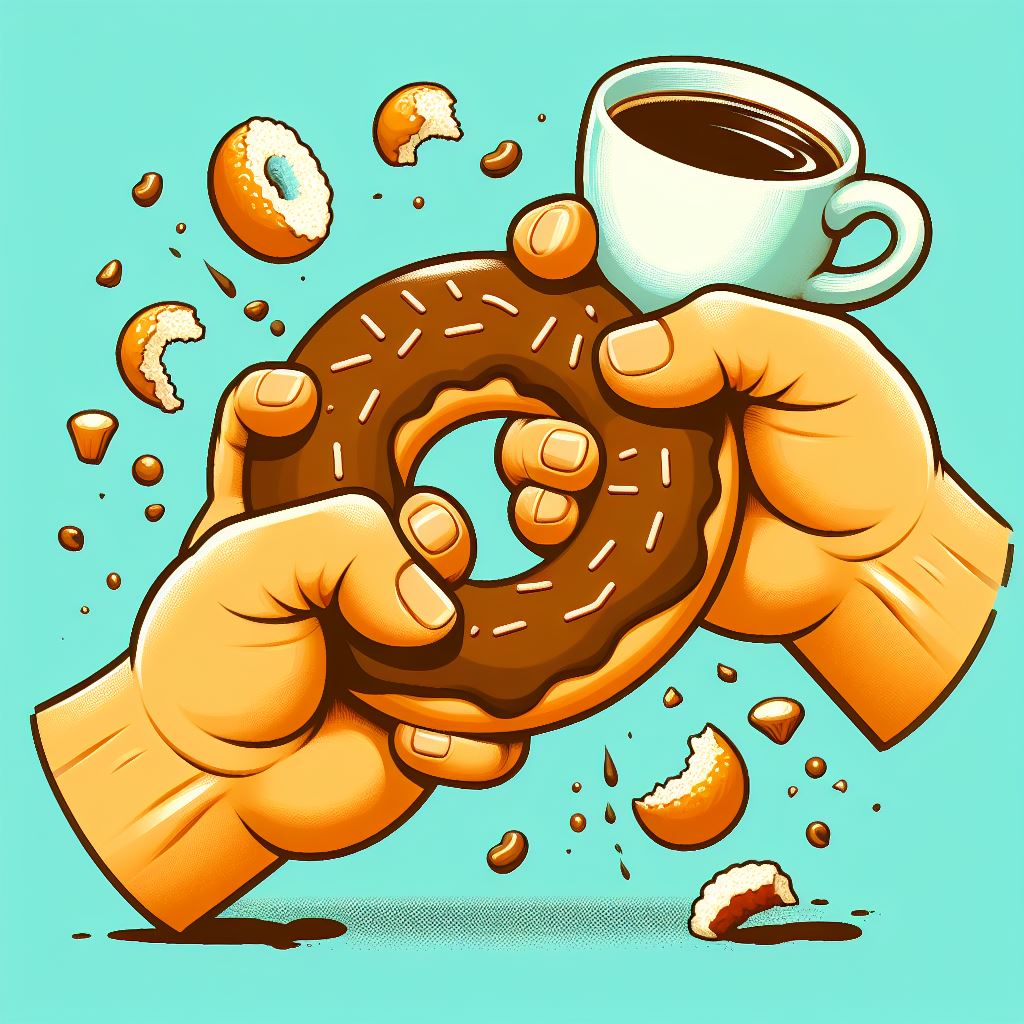Imagine it’s 11:51 PM…
You’re laying on the couch, scrolling on your phone and starting to doze off.
Just as you’re about to put your phone down, you get an email from the bakery you visit every morning on the way to the office.
It says:
“We’re giving away a dozen FREE DONUTS to our favorite customers — if you can come into the shop right away.
“The night shift employees forgot we close at midnight now, so they just pulled 300 fresh glazed donuts out of the oven. We can’t hold these beauties until morning. Get here by midnight and you can have a dozen FREE. The glaze is still dripping!”
You have 9 minutes to jump up and shoot over to the bakery, which is just down the street. You’d have to rush, but you can make it.
Or you could keep scrolling on your phone until you slip into sweet unconsciousness.
What would you do?
Now imagine a different scenario…
It’s 1:51 AM.
You had a brutal day. Your team stayed late working on a big project and they agreed to come in at 6:00 to help finish up before the deadline.
To show your appreciation, you promised the team donuts in the morning. But your favorite bakery doesn’t open until 6:30, so you picked them up tonight.
You just crawled into your bed to get a few hours of sleep.
At that moment, you hear your brother unlock your front door and walk into the house. He pops in whenever he’s in town and doesn’t want to pay for a hotel.
The first thought that crosses your mind is that you NEVER should have given him that key.
Your second thought: that dude eats everything in the kitchen whenever he stops by. And he loves donuts…
What do you do?
In the first scenario, there’s a strong chance you’re not taking any action. You’ll ignore the “irresistible” offer of free donuts and fall asleep on the couch.
In the second scenario, there’s a 99% probability you’ll fly into action. You’re jumping out of bed and running toward the kitchen to make sure your brother doesn’t eat your team’s donuts.
You see where I’m going with this.
We’ve always heard that people are twice as likely to take action to avoid pain than to enjoy pleasure.
Some more recent studies indicate that, in fact, people react just as strongly to gains as they do to losses.
Apparently researchers haven’t been able to replicate results proving that “loss aversion” alone has a significant impact on decision-making.
(I wanted you to hear about this from me.)
Now, I haven’t conducted any clinical studies. When I think about it, I haven’t run loss aversion split-tests in a while.
I assumed the old info was true.
But based on experience, I still believe loss aversion is a compelling emotional force. The scenarios with the donuts above are solid illustrations.
So what’s the big takeaway here?
You know me. I’m always encouraging you to test different ideas to see what works best for you and your audience.
If you haven’t tried loss aversion as a tactic to increase conversions, give it a try. For example, you can use:
- disappearing bonuses
- real scarcity where people will miss out on the opportunity
- expiring credits toward purchase (instead of discounts)
Test this stuff against simply trying to “add more value.” Then draw your own conclusions.
My second point is this: Researchers found that loss aversion begins to take over when losses are serious (because self-preservation is a priority for the brain).
When you’re using the negative argument, intensify the size and severity of the potential loss. Show the reader how much it’s going to cost him not to act:
- Heart disease is inching closer every minute if you [BLANK]
- The IRS could take thousands right out of your bank… unless you [BLANK]
- Your wife will lose interest in you if you don’t do [BLANK]
Big losses, big reaction.
Give it a try in your own marketing.

